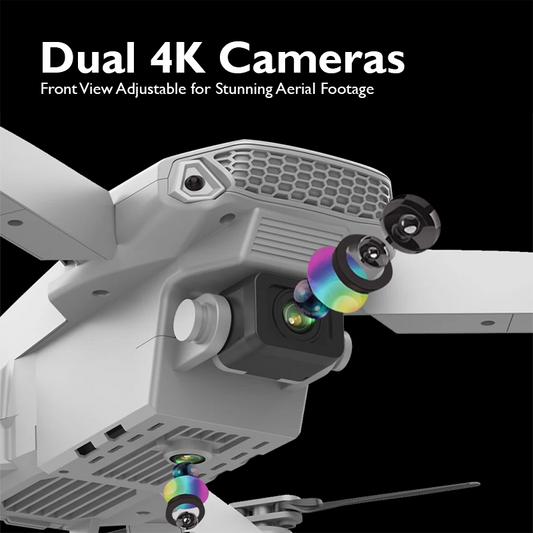Drone Safety Tips: Flying Responsibly and Avoiding Accidents

Drones have revolutionized photography, videography, and recreational flying, offering a unique perspective of the world from above. However, with the increasing popularity of drones comes the responsibility to fly them safely and responsibly. Understanding and adhering to drone safety tips is crucial for preventing accidents and ensuring a positive experience for all. Here are some essential tips for flying your drone responsibly and avoiding accidents.
1.Know the Rules and Regulations
Before you take your drone to the skies, it's essential to familiarize yourself with the local rules and regulations governing drone usage. Many countries have specific laws regarding where and how you can fly drones. For instance, in the United States, the Federal Aviation Administration (FAA) requires drone operators to register their drones and follow guidelines such as flying below 400 feet, avoiding flying over people, and keeping the drone within the visual line of sight. Adhering to these regulations helps ensure the safety of both the drone operator and the public.
2.Pre-Flight Checklist
Performing a pre-flight checklist is a critical step in ensuring a safe flight. This checklist should include:
Battery Check: Ensure that both the drone and controller batteries are fully charged.
Propeller Inspection: Check the propellers for any damage or wear and tear.
GPS Signal: Verify that your drone has a strong GPS signal before takeoff.
Firmware Updates: Ensure that your drone's firmware is up to date to benefit from the latest safety features and improvements.
Weather Conditions: Check the weather forecast and avoid flying in adverse conditions such as strong winds, rain, or snow.

3.Maintain Line of Sight
One of the fundamental rules of safe drone operation is to always keep your drone within your visual line of sight. This means you should be able to see your drone with your naked eyes at all times. Flying beyond your line of sight increases the risk of losing control of your drone, potentially leading to accidents or loss of the drone.
4.Respect No-Fly Zones
Certain areas are designated as no-fly zones due to safety or security reasons. These areas typically include airports, military bases, and crowded events. Using apps like Airmap or the FAA's B4UFLY app can help you identify no-fly zones and ensure you avoid restricted areas. Flying in no-fly zones can result in severe penalties and jeopardize public safety.
5.Avoid Flying Over People and Property
Flying your drone over people, private property, or sensitive areas can be dangerous and is often prohibited by regulations. In the event of a malfunction or loss of control, the drone could cause injury or damage. Always choose open, unpopulated areas for your flights to minimize risks.
6.Monitor Battery Life
Keep a close eye on your drone's battery life during flights. Drones can quickly deplete their batteries, especially when performing high-energy maneuvers or flying in windy conditions. Plan your flight to ensure you have enough battery power to return safely to your takeoff point. Many drones come with a "return to home" feature that activates when the battery is low, automatically guiding the drone back to its starting point.
7.Practice Flying Skills
If you are new to flying drones, practice your piloting skills in a safe and controlled environment. Start with basic maneuvers and gradually progress to more advanced techniques as you become more confident. Many drones offer beginner modes that limit speed and altitude, making it easier to learn the controls.
8.Use Geofencing Features
Many modern drones come equipped with geofencing features that prevent them from entering restricted areas. Enable these features to add an extra layer of safety to your flights. Geofencing helps ensure that your drone stays within designated boundaries, reducing the risk of accidentally flying into restricted or dangerous zones.

Flying a drone responsibly requires knowledge, preparation, and adherence to safety guidelines. By understanding and following these drone safety tips, you can enjoy the incredible experience of drone flying while minimizing the risks of accidents. Remember, safe flying practices protect not only your drone but also the people and property around you.
Explore a variety of drones at our online drone store.
Happy and safe flying!











